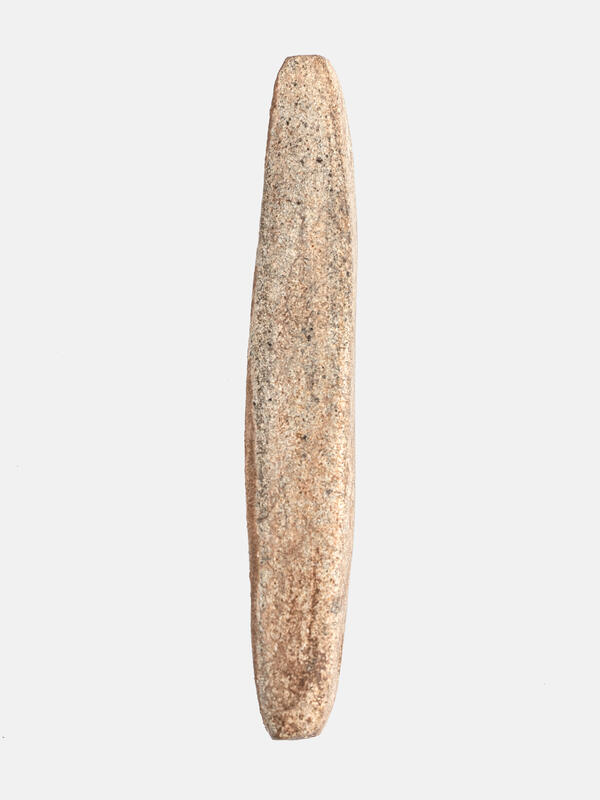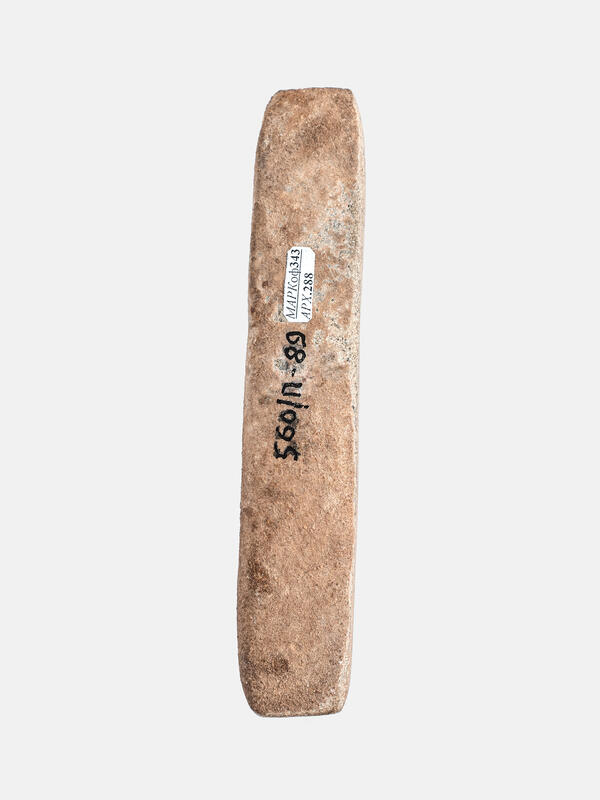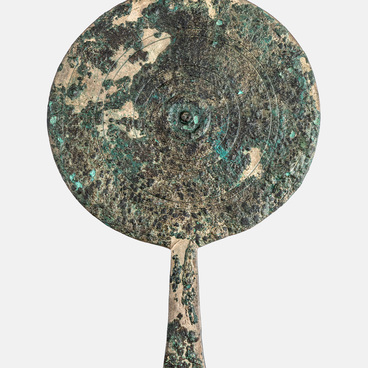The exhibition of the Chelyabinsk State Historical and Archaeological Museum-Reserve “Arkaim” includes a whetstone from mound 2 of the Pobeda burial ground in Kizilsky district, Chelyabinsk region. The burial mound was studied in 1999–2000 by the archeological expedition of the Arkaim Museum-Reserve and Chelyabinsk State University led by Alexander Tairov and Ilya Lyubchansky.
The Pobeda burial ground is located six kilometers northeast of the village of Zingeysky on a flattened hilltop and consists of three mounds with earthy, well turfed fill. Mound 2 was 22 meters in diameter and 1.1 meters high and was built over a burnt wooden burial structure erected at the level of the ancient surface, with a shallow ditch dug around the structure. Inside the structure, fragments of burnt human and animal bones, fragments of a clay vessel and a stone ax from the 5th century BC were found in the mound.
A whetstone is a thin bar, flint stone or stone slab on which cutting tools are sharpened or whetted. The whetstone found in the Pobeda burial ground is made of fine-grained granite. The rock was identified by the geologist Alexander Levit, associate professor of the Department of Ecology of the Chelyabinsk State University. The shape of the whetstone is elongated-rectangular full face, and cigar-shaped in profile. In its upper part is a blind hole, conical in cross-section, with a diameter of 0.4 centimeters along the outer edge.
Swords, knives, and arrowheads were sharpened with a whetstone. Some archaeologists note that whetstone could also have a cult purpose.
There were two more inlet grave pits in the mound. The first one contained two burials from different times and was robbed in ancient times. Among other finds, human bones, fragments of an iron dagger and a bronze arrowhead were found in it. At the bottom of the second pit, a human skeleton was excavated. The buried man was laid on his back with his arms stretched out along his body. A quiver with 40 arrows with bronze tips was placed on the left thigh and abdomen, an iron bracket and a hook have been preserved as well. A part of a ram carcass and two iron knives were laid to the right of the buried man. Mound 2 was built in the 5th century BC, the inlet pits were constructed in the mound in the 4th century BC.




